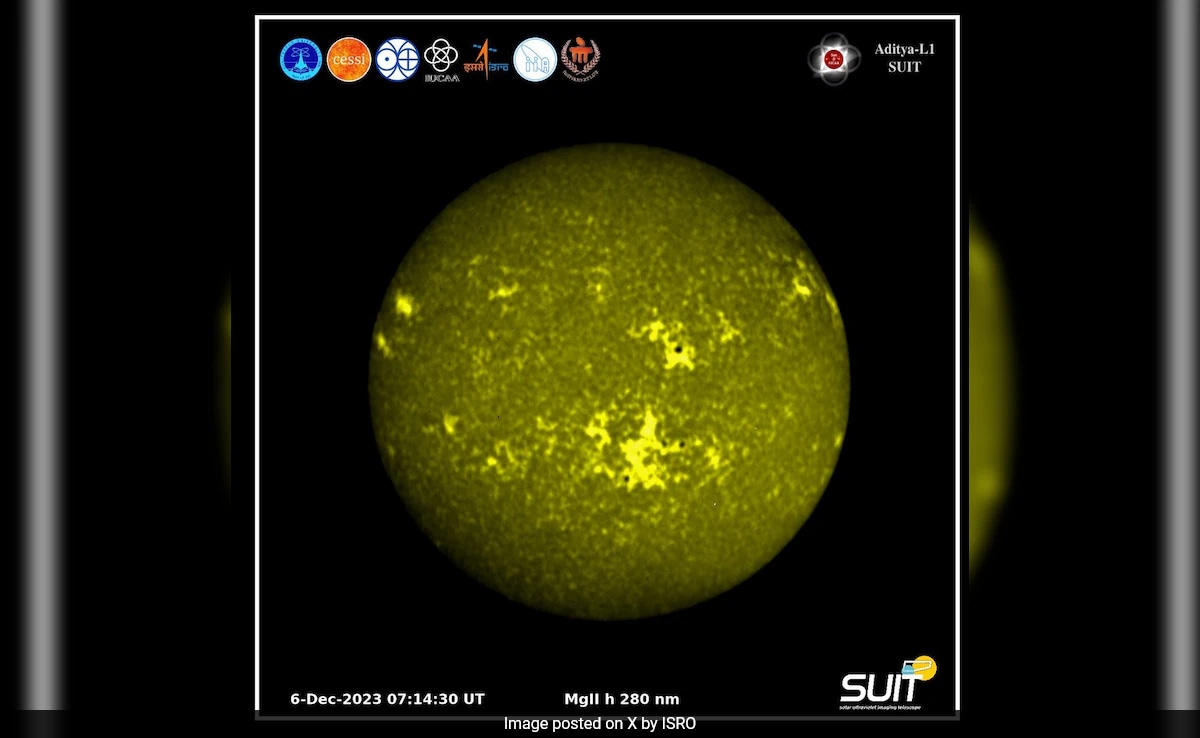
Sunspots, plage and quiet Sun reqions were among the features revealed through the photos.
New Delhi:
The first-ever full-disk images of the Sun has been captured by India’s Aditya-L1 Mission, said ISRO this evening. The photos – in near ultraviolent wavelengths – “provide pioneering insights into the intricate details of the Sun’s photosphere and chromosphere,” ISRO posted on X, formerly Twitter.
Aditya-L1 Mission:
The SUIT payload captures full-disk images of the Sun in near ultraviolet wavelengthsThe images include the first-ever full-disk representations of the Sun in wavelengths ranging from 200 to 400 nm.
They provide pioneering insights into the intricate details… pic.twitter.com/YBAYJ3YkUy
— ISRO (@isro) December 8, 2023
The Solar Ultraviolet Imaging Telescope or SUIT instrument on board the Aditya-L1 spacecraft captured the images in the 200-400 nm wavelength range, ISRO said in a statement. SUIT captures images of the Sun’s photosphere and chromosphere in this wavelength range using various scientific filters.
Sunspots, plage and quiet Sun reqions were among the features revealed through the photos. The SUIT observations will help scientists study the dynamic coupling of the magnetized solar atmosphere and assist them in placing tight constraints on the effects of solar radiation on Earth’s climate, the space agency said.
“On November 20, 2023, the SUIT payload was powered On. Following a successful pre-commissioning phase, the telescope captured its first light science images on December 6, 2023,” ISRO said, adding “These unprecedented images, taken using eleven different filters (as shown in Table 1), include the first-ever full-disk representations of the Sun in wavelengths ranging from 200 to 400 nm, excluding Ca II h. The full disk images of the Sun in the Ca II h wavelength has been studied from other observatories.”
Aditya-L1 is the first Indian space-based observatory to study the Sun from a halo orbit around first Sun-earth Lagrangian point (L1), which is located roughly 1.5 million km from Earth. The Aditya-L1 spacecraft was launched on September 2 from the Satish Dhawan Space Centre, Sriharikota.




